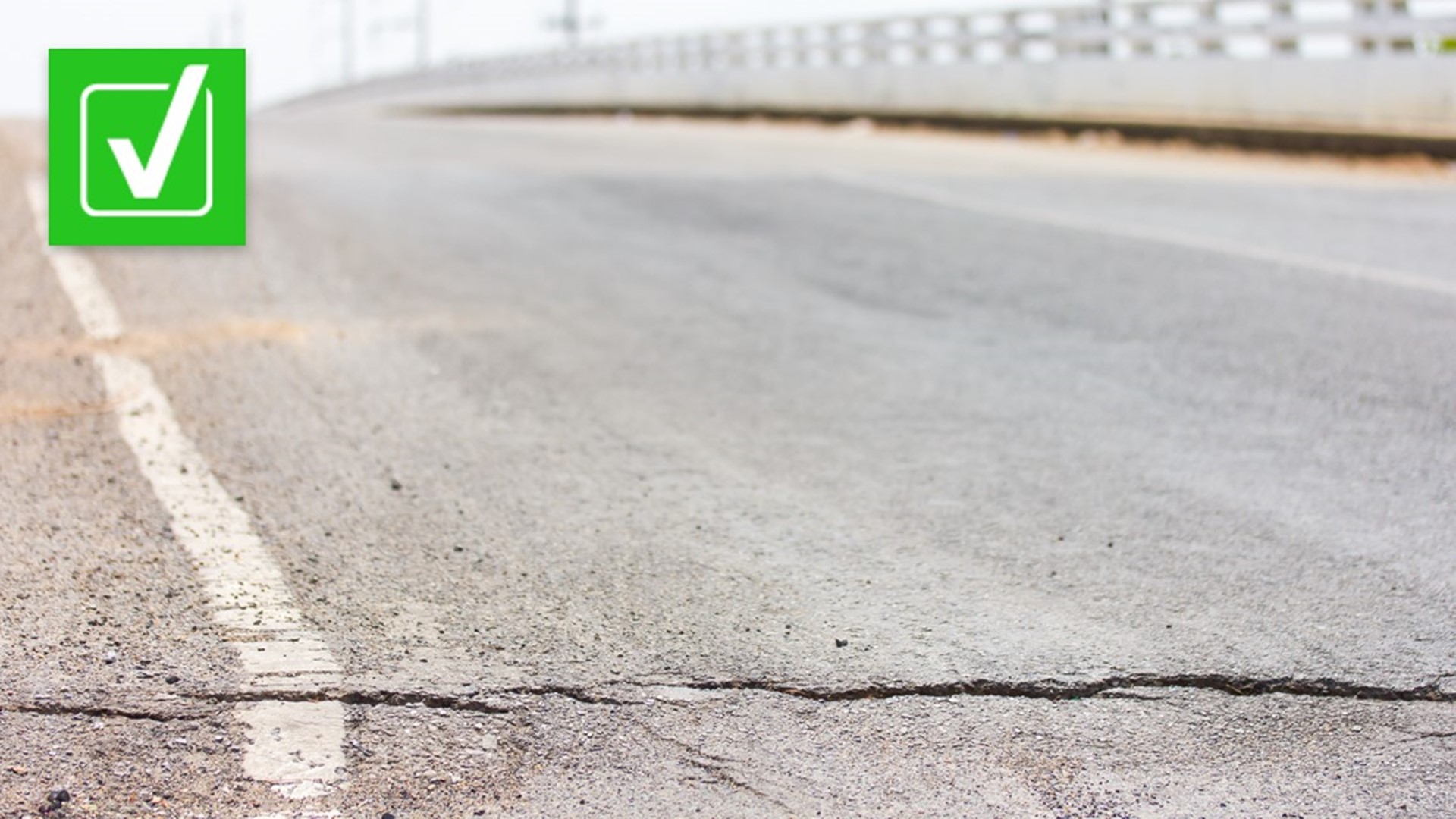UPDATE (1/28/22): This story has been updated with the data from the American Road & Transportation Builders Association (ARTBA)'s 2022 Bridge Report. The story originally used data from ARTBA's 2021 Bridge Report.
The U.S. Senate on Aug. 10 passed a $1 trillion bipartisan infrastructure bill that includes $550 billion in new spending over the next five years. The bill heads to the House next.
As part of President Joe Biden’s pitch for passage of the bill, he tweeted that 45,000 bridges in the U.S. are in poor condition.
THE QUESTION
Are 45,000 bridges in the U.S in poor condition?
THE SOURCES
THE ANSWER
Yes, 45,000 bridges in the U.S. are in poor condition.
WHAT WE FOUND
In 2020, there were a total of 618,456 bridges in all 50 U.S. states, the District of Columbia, Guam, Puerto Rico and the U.S. Virgin Islands, according to data from the U.S. Department of Transportation. Of those bridges, 45,031 bridges, about 7%, were in poor condition, the agency said. There were 278,433 bridges, about 45%, in good condition and 294,922 bridges, about 48%, in fair condition.
The Federal Highway Administration (FHWA) says ratings are given for different bridge components: the deck, superstructure, substructure and culvert. The Pennsylvania Department of Transportation says these ratings range from 0-9. The higher the rating, the better the condition of the bridge. If the lowest rating is 7 or higher, the bridge is in good condition, according to the FHWA. If the lowest rating is 5 or 6, then the bridge is characterized as in fair condition. Ratings 4 or lower mean the bridge is in poor condition.
In its infrastructure report card, the American Society of Civil Engineers (ASCE), which represents civil engineers across the world, says bridges in poor condition pose greater risks.
“While structurally deficient bridges are not inherently unsafe, they require substantial investment in the form of replacement or significant rehabilitation, and they present higher risk for future closure or weight restrictions,” the group said.
The ASCE said 12% of bridges in the U.S. were in poor condition a decade ago, so the percentage of bridges in poor condition has gone down. At the same time, the number of bridges downgraded from good to fair condition has increased, according to the ASCE.
The American Road & Transportation Builders Association (ARTBA), which advocates for investment in transportation infrastructure, has noticed the same trends. In total, the group says nearly 224,000 bridges – 36% of the country’s bridges -- need some form of repair. Almost 80,000 more bridges need to be replaced.
On its website, the ARTBA has a state-by-state analysis of bridges in poor condition. According to the ARTBA, the areas with the highest percentage of bridges in poor condition are:
- West Virginia: 20.4%
- Iowa: 18.9%
- Rhode Island: 17.5%
- South Dakota: 17.3%
- Pennsylvania: 13.8%
- Louisiana: 12.8%
- Maine: 12.6%
- Puerto Rico: 12.1%
- North Dakota: 11.2%
- Michigan: 11.0%
The ARTBA estimates people drive across bridges in poor condition 167.5 million times per day.
At the current pace, it would take the U.S. nearly 30 years to repair the current backlog of bridges in poor condition, according to ARTBA. The organization estimates the cost to repair or replace the 43,578 bridges in poor condition would be $260 billion.
The infrastructure bill passed by the Senate includes $110 billion in new funding for roads, bridges and other projects, according to the White House. The Congressional Budget Office says the legislation would add $256 billion to projected deficits over the next 10 years.

